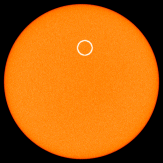C
centsworth_II
Guest
<font color="#333399"><BR/>Replying to:<BR/><DIV CLASS='Discussion_PostQuote'>Seriously. If you are going to form nonsense theories, at least do it coherently like most other people.<br /> Posted by UFmbutler</DIV></font><br />...and then post it in "Unexplained".<img src="http://sitelife.space.com/ver1.0/content/scripts/tinymce/plugins/emotions/images/smiley-smile.gif" border="0" alt="Smile" title="Smile" /> <div class="Discussion_UserSignature"> </div>



